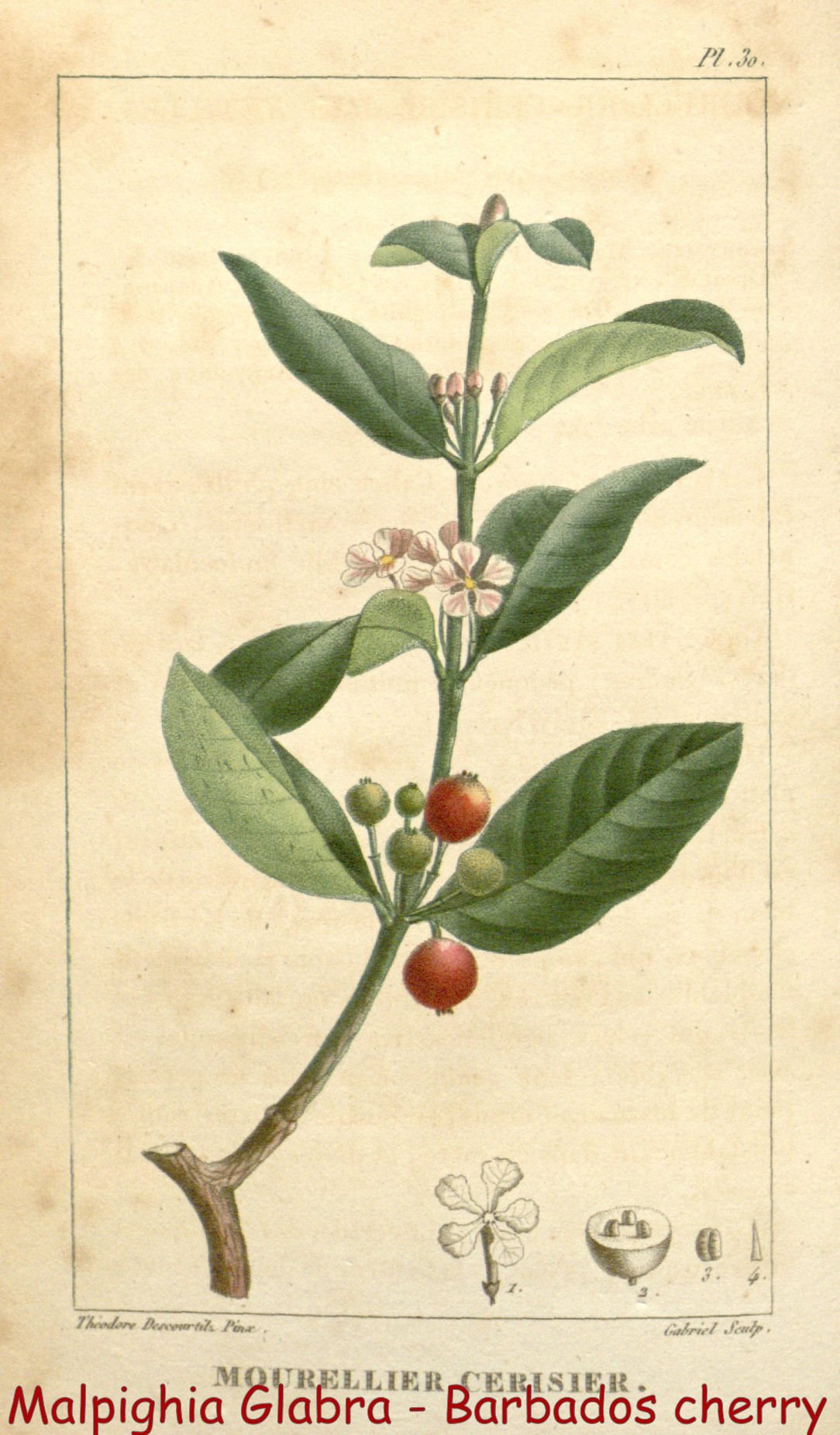 |
 |
MALPIGHIA GLABRA - BARBADOS CHERRY. Synonym
Synonym
M. punicifolia L. Common name Acerola, Barbados cherry, West Indian cherry, grosella, cerisier, cereza colorada, wild crapemyrtle, French cherry, Puerto Rican cherry, Manzanita. Family Malpighiaceae (Malpighia family). Overview The Barbados cherry tree, native to Suriname, grows up to 15 feet tall with wide spreading branches and evergreen oval leaves. The tiny pink-white flowers produce red-orange to bright red, juicy fruits. This fruit is round to oblate. The seed is 3 lobed of which each is triangular with fluted wings. Barbados cherries are often eaten out of hand and taste delicious! They also can be made into juice or jelly. Constituents Barbados cherry is very rich in vitamin C; 2,000 to 4,600 milligram natural vitamin C per 100 gram of an edible potion. It is also rich in vitamin A, iron, calcium, magnesium, niacin, phosphorus, potassium, riboflavonine and thiamine. Also: 3-methyl-3-butenol, dehydroascorbic acid, dextrose, diketogulonic acid, fructose, furfural, hexadecanoic acid, limonene, l-malic acid and sucrose. Suriname's Traditional Medicine The leaves are used against dysentery and diarrhea. Also used for liver ailments; fruit used against the common cold. Hardiness USDA zone 9 - 11. Propagation Seeds and cuttings. Culture Full sun / partial shade, Ph soil: 6.5; well drained soil. Acerola can be grown in Florida; mature trees can survive brief exposure to 28° F. However, young plants are killed if the temperature goes below 30° F.; so plant in frost free spots. The trees will fruit well and does not need much care. Ripe fruit is very perishable and damages easily. Store this cold at 40° F. |
For the right freight rate, shipping charges, conditions and delivery service, please visit our Webstore page! |